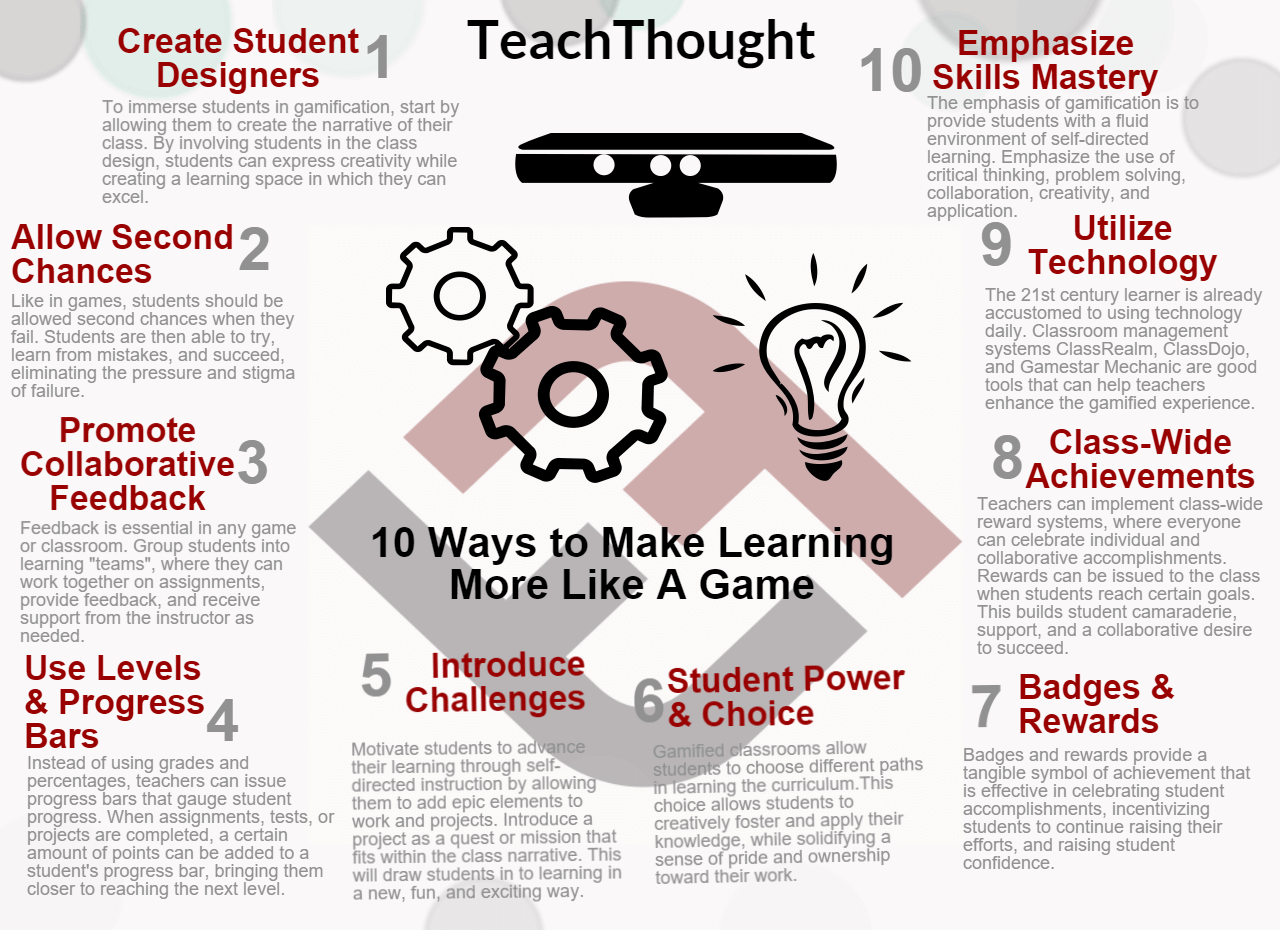
What Are The Best Strategies To Make Learning Feel More Like A Game?
by TeachThought Staff
We’ve talked about gamification quite a bit, which is different than game-based learning, if you’ll recall. (The definition of gamification is the application of game-like mechanics to non-game entities to encourage a specific behavior.)
Making your classroom work like a game may not be feasible. Terry Heick talked some about the idea in the past, but was talking specifically about video games, whereas many of the items below are inclined more to “games” in general. So we’ve decided to re-approach from another angle with more specific strategies instead of general suggestions.
10 Strategies To Make Learning Feel More Like A Game
1. Create Student Designers
To immerse students in gamification, start by allowing them to create the narrative of their class. By involving students in the class design, students can express creativity while creating a learning space in which they can excel.
2. Allow Second Chances
And third. And fourth. Like in games, students should be allowed second chances when they fail. Students are then able to try, learn from mistakes, and succeed, eliminating the pressure and stigma of failure.
3. Promote Collaborative Feedback
Feedback is essential in any game or classroom. Group students into learning ‘teams,’ where they can work together on assignments, provide feedback, and receive support from the instructor as needed. Games encourage teamwork. and the teammates often give as much feedback as the coach.
4. Use Levels & Progress Bars
Literally.
Instead of using grades and percentages, teachers can issue progress bars that gauge student progress. When assignments, tests, or projects are completed, a certain amount of points can be added to a student’s progress bar, bringing them closer to reaching the next level.
Kids love seeing visible progress. In fact, we all do.
5. Introduce Challenges
Motivate students to advance their learning through self-directed instruction by allowing them to add epic elements to work and projects. Introduce a project as a quest or mission that fits within the class narrative. This will draw students in to learning in a new, fun, and exciting way.
6. Emphasize Student Power & Choice
Gamified classrooms allow students to choose different paths in learning the curriculum. This choice allows students to creatively foster and apply their knowledge while solidifying a sense of pride and ownership in their work.
7. Use Badges & Rewards
Badges and rewards provide a tangible symbol of achievement that is effective in celebrating student accomplishments, incentivizing students to continue raising their efforts, and raising student confidence.
8. Integrate Class-Wide Achievements
Teachers can implement class-wide reward systems, where everyone can celebrate individual and collaborative accomplishments. Rewards can be issued to the class when students reach certain goals. This builds student camaraderie, support, and a collaborative desire to succeed.
9. Use Smart Technology
The 21st-century learner is already accustomed to using technology daily. Classroom management systems ClassRealm, ClassDojo, and Gamestar Mechanic are good tools that can help teachers enhance the gamified experience.
10. Emphasize Skills Mastery
The emphasis of gamification is to provide students with a fluid environment of self-directed learning. Emphasize the use of critical thinking, problem solving, collaboration, creativity, and application.
10 Strategies To Make Learning Feel More Like A Game
